Updated: 29-Jan-2020
This company is producing liquid fuel rocket motors since 1946.
-They were used in multiple USAF and NASA programs, in vehicles such as the Bell-XS-1, Nike-Ajax, LEM, Agena, Centaur, Thor or Minuteman III.
-The company began denominating "Bell Aerosystems Company" and lately "Bell Aerospace Textron".
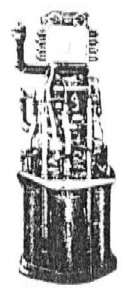
"Bell RMI"
-The Bell RMI-6000 C-4 engine broke the sound barrier for the first time on the Bell-XS-1 aircraft. With four combustion chambers of two different sizes, they tried to make the engine controllable.
-The Bell "Hustler", so Agena engines were known in the beginning, were used in B-58 "Hustler" nuclear weapons with rocket propulsion (hence its name). They were also installed in the Thor-Agena and Atlas-Agena.

"Agena engine"
-Actually the "Agena-A", which was its popular name, had reference "Bell 8048" and the US Military reference was LR81-B1.
-It used nitric acid and UDMH. Its thrust in vacuum was 7,000 kgf approximately. Hypergolic propellant henceforth.
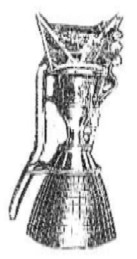
"Bell 8096"
-Later versions of the Agena were the "8096" that used nitric acid and dimethyl-hydrazina.
-Agena 8247 engines, which are similar to the 8096, have been used in hundreds of missions. They have a unique combustion chamber and a turbo pump to feed it.
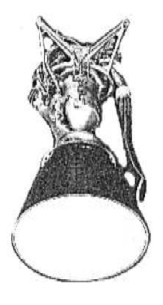
"Bell-Agena, later version"
-In the LEM or Lunar Module, the 8258 engines with single-ablative chamber were used. They used a mixture, half and half of Hydrazina (UDMH) and NitrogenTetroxide. It was developed between 1964 and 1965, as the Lunar Module Ascent Engine.

"The LEM's engine"
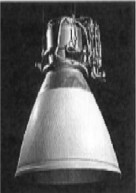
"The LMAE's engine"
-In the 1950s, test engineer Harold M. Graham gave a demonstration of a personal portable rocket lift system, in accordance with the US Army Transportation Research Command (Trecom). This system became known as SRML or Small Rocket Lift Device.
-The engine's manufacturing and tuning was carried out by Bell Aerosystems Company.
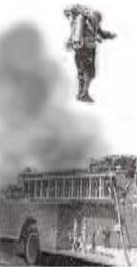
"SRML demonstration"
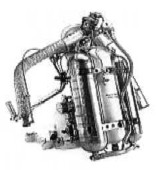
"Rocket Belt, Bell no 2"
-A significantly improved variant of the one shown in the illustration, we could see in a spectacular exhibition at the Opening Ceremony of the 1984 Los Angeles Olympic Games.
From appendix 6: In the main text the 8048 model rocket engine is mentioned. At the National Museum of the USAF we could get a picture of it.

"Bell 8048 model"
-Used in the first Agena rockets, they were very useful to put satellites into orbit during the years 1950-1960.
-And as an engine in the second stage of the USAF ballistic missiles.
-Sometimes Agenas are coupled as second stages on the Atlas, Titan and Thor.
-Other names of this same engine have been the generic XLR-81, and sometimes Hustler in the missile that was carried on board the supersonic B-58 "Hustler" bomber .
-The 8048 delivered 15,000 lbs of thrust and burned nitric acid as oxidant, and Dimethyl Hydrazine Asimétrica.
-The operating time was 120 seconds and entire engine can be swiveled to give gimbaled thrust.
The best known rocket engines of this brand are:
-8048
-8081 (XLR8A-BA)
-8096 (YLR81-BA)
-8247 (XLR81BA-13)
-The Chariot model
-LR-65
-LR-67
-LR67B-1
-LR81B-1
-XLR-65B-1
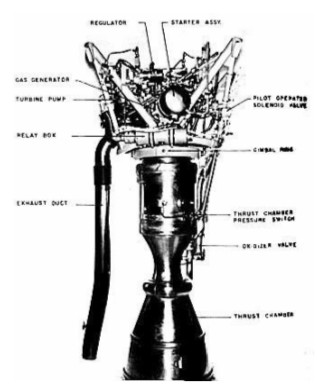
"Bell 8096 (YLR81-BA)"
-The 8096 engine was installed on the Agena missile, and that is why it is sometimes simply known as "Agena".
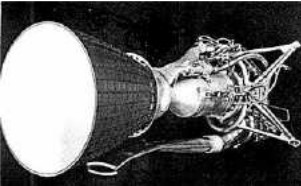
"Bell 8096 Agena engine"
Engines of BELL
Model: 117 (de la bomba del B-58)
Model: 8001 (Agena)

"Motor Agena" (PeT)
Model: 8081 (XLR8A-BA)
Model: 8096 (YLR81-BA) -A, -39, -C

"Motor Bell 8096 Agena"
Model: 8247 (XLR81BA-13)
Model: 8258
Model: Bell 8048

"Bell Model 8048"
Model: Chariot exotic
Model: LF-2
Model: LR-65 (XLR65-B-1)
Model: LR-67 (LR-67-B-1), B1
Model: LR-81-B-1
Model: RMI-6000-C-4

"Bell RMI"


